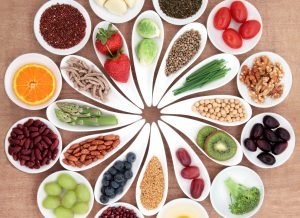 If you want adequate nutrition for life, you need to learn how to make healthier choices when it comes to food. While there are all sorts of programs, including one called Nutrition for Life the key to all of them is eating healthier. You need all the important nutrients to have your body perform properly and keep your caloric intake lower. Choosing foods that are not processed or minimally processed is one key to a healthier lifestyle. Processing not only reduces the nutrients, it also may mean the addition of harmful chemicals that cause damage.
If you want adequate nutrition for life, you need to learn how to make healthier choices when it comes to food. While there are all sorts of programs, including one called Nutrition for Life the key to all of them is eating healthier. You need all the important nutrients to have your body perform properly and keep your caloric intake lower. Choosing foods that are not processed or minimally processed is one key to a healthier lifestyle. Processing not only reduces the nutrients, it also may mean the addition of harmful chemicals that cause damage.
Know your body.
The first key is paying attention to your body. While milk is a great addition to a healthy eating menu, if you’re lactose intolerant you’ll suffer from digestive upsets that vary from gas to vomiting and diarrhea. Note how you feel after you eat certain foods. Everyone is different, so getting nutrients may be different too. Rather than get your calcium from milk products, consider broccoli, sardines or kale. Be aware that some foods will produce gas until your body adjusts to them, such as high fiber foods like beans and fruit. Go slowly with these until your body is ready for more.
Watch out for snack foods.
Unfortunately, there seems to be more snack foods available than healthy foods….or maybe it just seems that way when you go to the grocery hungry. Chips, cookies, candy and even carbonated drinks can add pounds without adding nutrition. The best route to go is to plan ahead. Start by eating before you go grocery shopping to avoid hunger impulse buying of snacks. Prepare healthy snacks ahead of time and have them ready to eat for those times you need a quick pick-me-up, like mid morning or mid afternoon. These can be veggies and dip, fruit or even yogurt or hard-boiled eggs.
Eat lots of veggies and some fruit.
Unless you’ve lived in an isolated location, you probably already know vegetables are good for you. Fruit is also, but the higher sugar content means you eat a little less of it than fresh vegetables. The closer to their natural state, the better. Six to thirteen servings is the baseline, with the colors of the servings varying. You should have a rainbow of color, with some fresh green leafy veggies, bright orange, purple, red and yellow ones. Each color comes from a phytonutrient that adds health benefits.
- Make sure you have adequate protein. Protein comes from a number of sources. If you use animal based protein, vary it and keep it lean. You can eat eggs, fish, chicken, lean beef and other animal sources or opt for vegetarian options like legumes.
- Drink plenty of water throughout the day. Not only does adequate water ensure you’ll fight dehydration and help keep your kidneys healthier, it also makes you feel fuller. Sometimes, especially after a workout, you’ll feel hungry. It might really mean you’re thirsty. Try a bottle of water first.
- When you eat healthy, you never have to diet. Healthy eating not only helps take off weight, it helps prevent it from returning.
- Learn the difference between eating out of boredom, habit or exhaustion and real hunger. Don’t worry if you leave food on your plate if you’re full. Eat only until you’re full.
